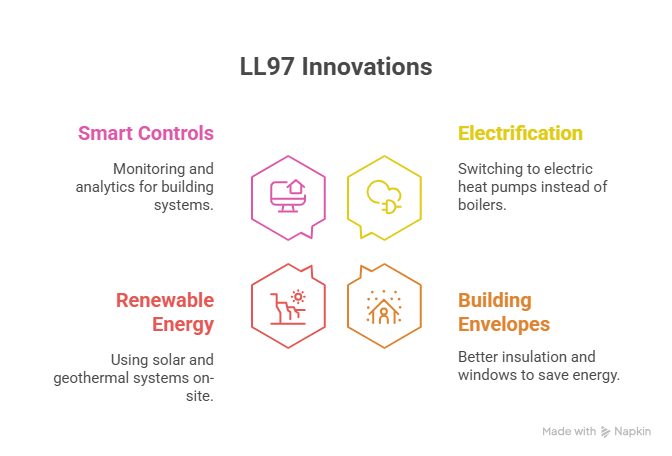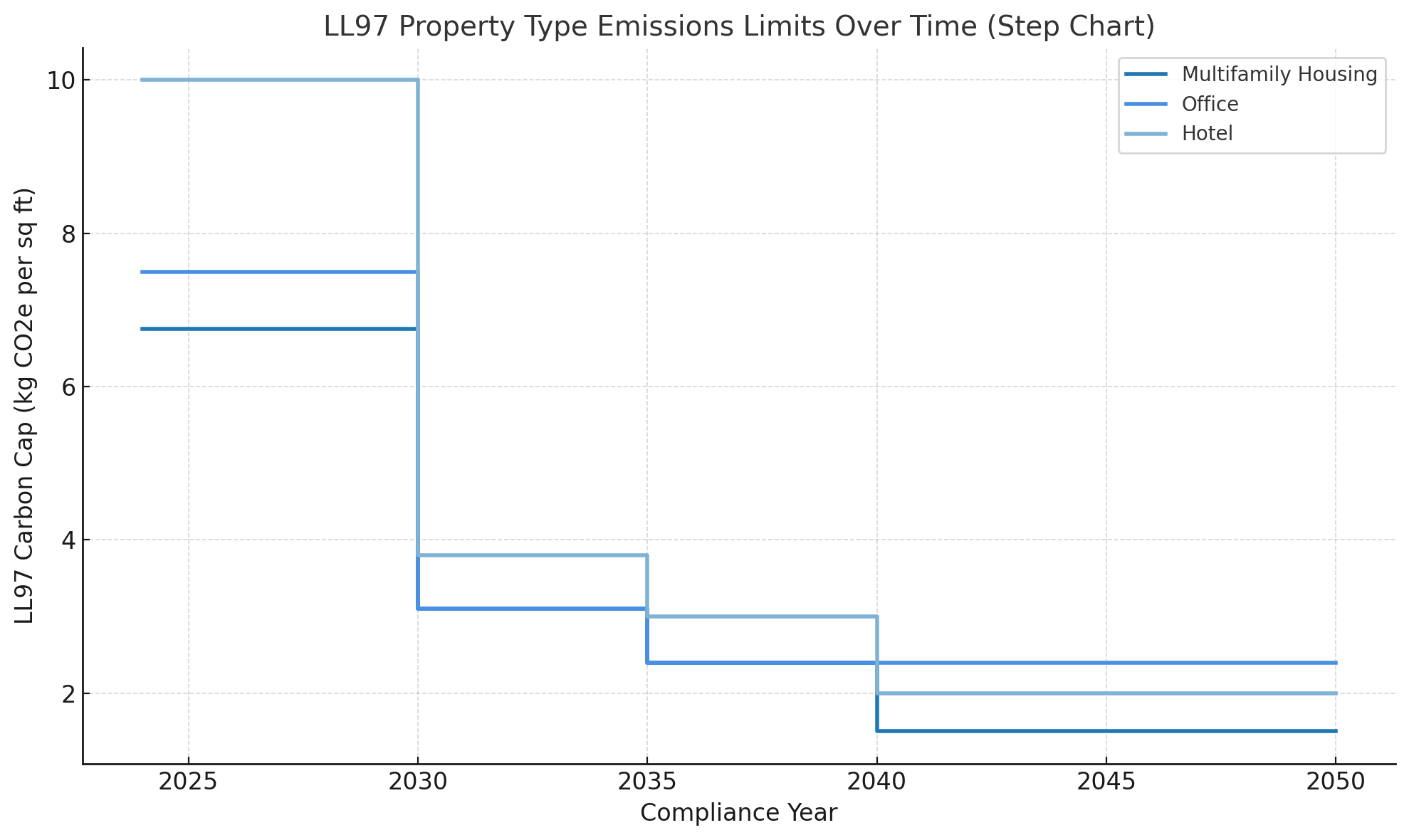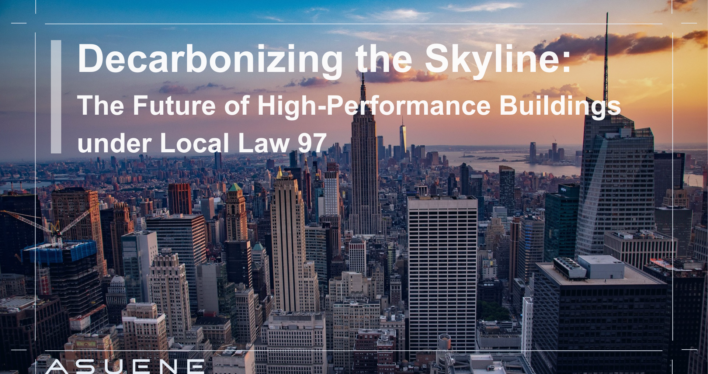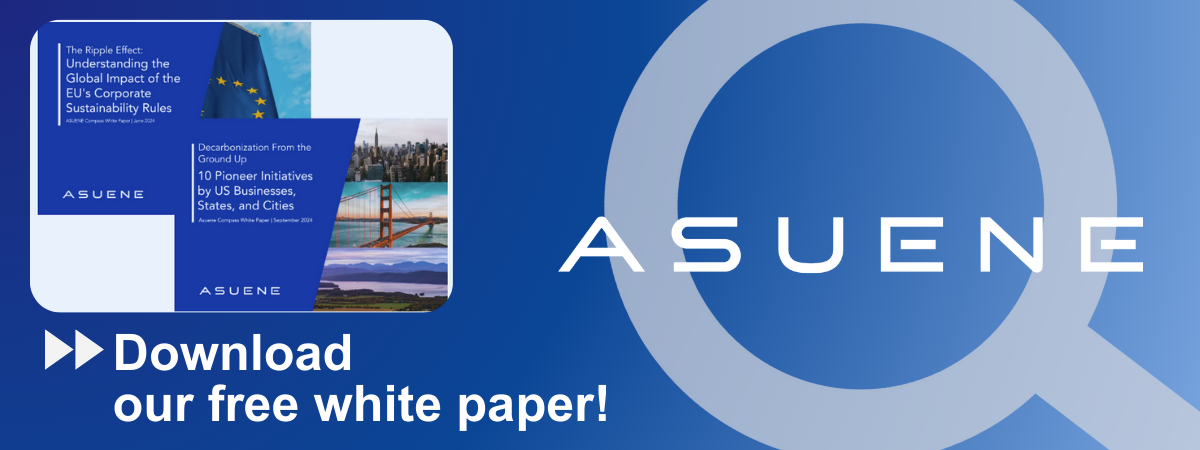- Article Summary
-
Overview
New York City has taken a bold step toward climate accountability with the implementation of Local Law 97 (LL97), one of the most ambitious building emissions legislations in the world. Passed as part of the Climate Mobilization Act, LL97 mandates drastic reductions in greenhouse gas (GHG) emissions from buildings, a sector responsible for nearly 70% of NYC’s total emissions. As compliance deadlines draw closer, the law is reshaping how architects, engineers, building owners, and ESG investors view urban infrastructure.
In this article, we explore the transformative potential of LL97 in redefining the standards for high-performance buildings, its alignment with global decarbonization efforts, and the critical technologies and strategies that will enable compliance. We also examine how the law is fostering a new ecosystem of green innovation and accountability in the real estate sector, with implications well beyond NYC’s borders.
Policy Framework and Timeline
LL97 applies to buildings over 25,000 square feet and sets annual carbon intensity caps that begin in 2024 and become increasingly stringent by 2030 and beyond. By 2050, the law aims to reduce building-based emissions by 80%, aligning with New York State’s Climate Leadership and Community Protection Act (CLCPA) and the Paris Agreement.
Key milestones include:
- 2024–2029: First compliance period. Relatively lenient caps but intended to spur initial retrofits and audits.
- 2030–2034: Tighter emissions limits; non-compliant buildings face steep financial penalties.
- 2035–2050: Decarbonization targets grow more aggressive, pushing the envelope on zero-emissions construction.
As of 2025, amendments have been introduced to refine penalty structures, introduce carbon trading pilot programs, and expand support for affordable housing retrofits.
Technology and Design Innovations
Meeting LL97’s demands requires a suite of integrated solutions, combining low-carbon technologies with smart design strategies. Electrification of building systems is a core tactic, replacing fossil-fuel-based boilers with highly efficient electric heat pumps. These systems, especially when coupled with demand-response capabilities, allow for both decarbonization and grid integration.
The building envelope is another focus area. Enhanced insulation, triple-glazed windows, and thermal break technology help drastically reduce heat transfer, minimizing energy use for heating and cooling. Architects are also employing passive solar design and strategic shading as part of holistic solutions.
Renewable energy integration, particularly solar PV and geothermal systems, is becoming common in both new builds and deep retrofits. When coupled with battery storage and microgrid capabilities, these systems enhance energy resilience and emissions reduction.
Finally, advanced building automation systems enable real-time energy use monitoring and predictive analytics. By optimizing HVAC performance, lighting schedules, and plug loads, these tools play a pivotal role in maximizing energy efficiency.
Data from the NYC Accelerator and other city-led initiatives shows a 20–40% average emissions reduction for buildings undertaking full deep-energy retrofits.

Market Impacts and Investment Opportunities
The implementation of LL97 is catalyzing a multi-billion-dollar market for green construction and ESG-aligned retrofits. Nearly 50,000 buildings will be subject to compliance, according to 2025 estimates by the Urban Green Council. This creates substantial demand for architects, engineers, contractors, and technology providers specializing in sustainable building solutions.
The retrofit market alone could exceed $20 billion by 2030. This is prompting real estate investors to reassess asset valuations, factoring in the costs of compliance and the potential penalties for non-compliance. Green building certifications and LL97 alignment are increasingly seen as indicators of long-term asset value and risk mitigation.
Financial products are evolving in response. Green bonds, energy service performance contracts (ESPCs), and infrastructure funds targeting LL97-compliant assets are on the rise. Institutional investors are beginning to integrate LL97 risk metrics into their ESG scoring models, particularly for REITs and urban real estate portfolios with significant exposure to NYC properties.

Global Influence and Comparative Frameworks
LL97 is part of a growing global movement to decarbonize urban real estate. In Europe, the Energy Performance of Buildings Directive (EPBD) mandates energy performance certificates and nearly zero-energy buildings (NZEBs) by 2030. Meanwhile, California’s Title 24 and Boston’s BERDO 2.0 share similar decarbonization goals.
NYC’s legislation is distinguished by its binding emissions limits and penalty enforcement. As such, LL97 is becoming a model for other cities exploring legally enforceable climate mandates. Global observers are particularly interested in the law’s carbon trading mechanisms, equity provisions, and integration with state and federal incentives.
Critically, LL97 aligns with several broader sustainability frameworks. At the state level, it supports the Climate Leadership and Community Protection Act (CLCPA), which mandates an 85% reduction in greenhouse gas emissions by 2050. Nationally, LL97 complements the Biden administration’s goals under the Inflation Reduction Act (IRA), particularly its provisions for building electrification, energy efficiency incentives, and clean energy deployment. Globally, LL97 advances the ambitions of the Paris Agreement by targeting emissions from the built environment, a sector responsible for nearly 40% of global energy-related CO₂ emissions. By enforcing building-level emissions caps and encouraging electrification, LL97 provides a replicable model for other high-density urban areas seeking to fulfill their nationally determined contributions (NDCs).
This multi-level alignment enhances the credibility and influence of LL97, positioning New York City as a global laboratory for sustainable building policy and enforcement.

Conclusion
Local Law 97 marks a paradigm shift in the way urban buildings are designed, retrofitted, and financed. It elevates climate policy from voluntary green building certification to a binding regulatory framework with measurable impact. For global ESG stakeholders, LL97 offers both a cautionary tale and a blueprint, proof that bold policy can drive innovation, attract capital, and create a more sustainable built environment.
As the first compliance period unfolds and new technologies scale, the success of LL97 will likely influence decarbonization policies in megacities worldwide. For now, New York’s skyline is not only rising, but it’s transforming into a symbol of carbon accountability and climate leadership.
Why Work with ASUENE Inc.?
Asuene is a key player in carbon accounting, offering a comprehensive platform that measures, reduces, and reports emissions, including Scope 1-3, with expertise in decarbonization. Asuene serves over 10,000 clients worldwide, providing an all-in-one solution that integrates GHG accounting, ESG supply chain management, a Carbon Credit exchange platform, and third-party verification.
ASUENE supports companies in achieving net-zero goals through advanced technology, consulting services, and an extensive network.


